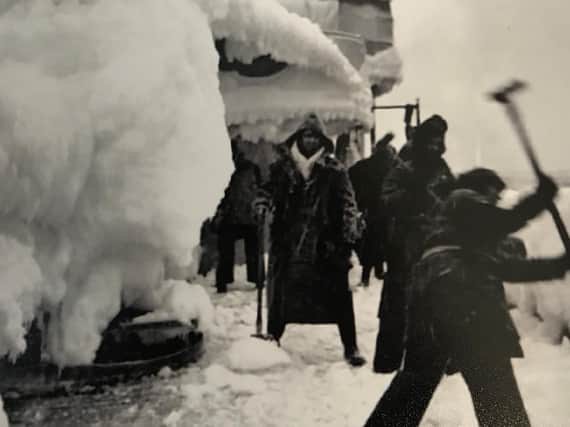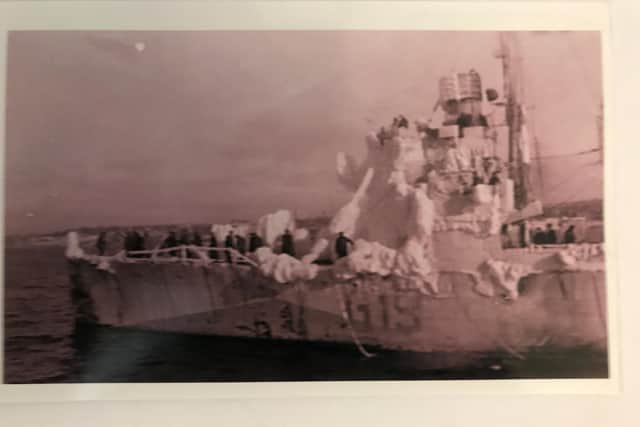Worldwide search for veterans of the Russian Arctic Convoys who set sail from Highland loch


Around 20 men who took part in what Churchill described as "the worst journey in the world" have so far been traced with hopes more sailors - and their families - can be found.
A total of 19 missions to take supplies into the Arctic Circle after Germany invaded the Soviet Union were launched from Loch Ewe in Wester Ross.
Advertisement
Hide AdAdvertisement
Hide AdAs the Merchant Navy ships headed north past Iceland, escorted by the navy and air cover, the crews were met with violent waves that often froze as they landed on board the decks.


Some 3,000 men lost their lives in the missions given the atrocious conditions and the rate of enemy attack.
Francis Russell, co-chairman of the Russian Arctic Convoy Museum at Aultbea said: "I have had the privilege of speaking to the convoy veterans over the years and they are very matter of fact what they did. But of course, they were amazingly brave."
Mr Russell said the occasion, which is expected to be attended by up to 500 people, was an opportunity to record the convoy stories from the last survivors of the missions.
The perilous Arctic Convoy route skirted close to the the north coast of Norway, then occupied by Germany, with enemy aircraft, U-boats and warships an ever present threat.
Mr Russell said the most dangerous part of the journey funnelled the ships between Arctic pack ice, and the dangerous Norwegian coast with the channel becoming even narrower in the winter when the ice advanced further south.
The destinations were the Russian ports of Murmansk and Archangel although the supplies were bombed by enemy aircraft before they reached their destination.
He added: "The journey was very dangerous indeed. The loss rate for allied ships was higher than on any other allied convoy series. In addition to the constant risk of enemy attack, the weather conditions were atrocious. . At the end of the war 85 Merchant vessels were lost. The Royal Navy lost 16 warships, and overall 3000 allied servicemen lost their lives."
Advertisement
Hide AdAdvertisement
Hide AdThe arrival of the Merchant Navy ships also impacted the local community, with some sailors allowed on shore to buy supplies from the village shop.
Loch Ewe, which was used as naval anchorage during World War One, was considered a perfect location for the convoy ships given its narrow entrance, deep water and relatively sheltered nature.
"There is the story that you could almost cross the loch going from ship to ship, such were their number," Mr Russell added.
The Russian Arctic Convoy Museum opened in Aultbea in May 2017 and last year drew visitors from 21 countries.
The commemoration in May has been described as a "momentous occasion" by organisers.
Veterans or their families wishing to attend the 75th anniversary event can contact Mr Casson at [email protected].
Comments
Want to join the conversation? Please or to comment on this article.
